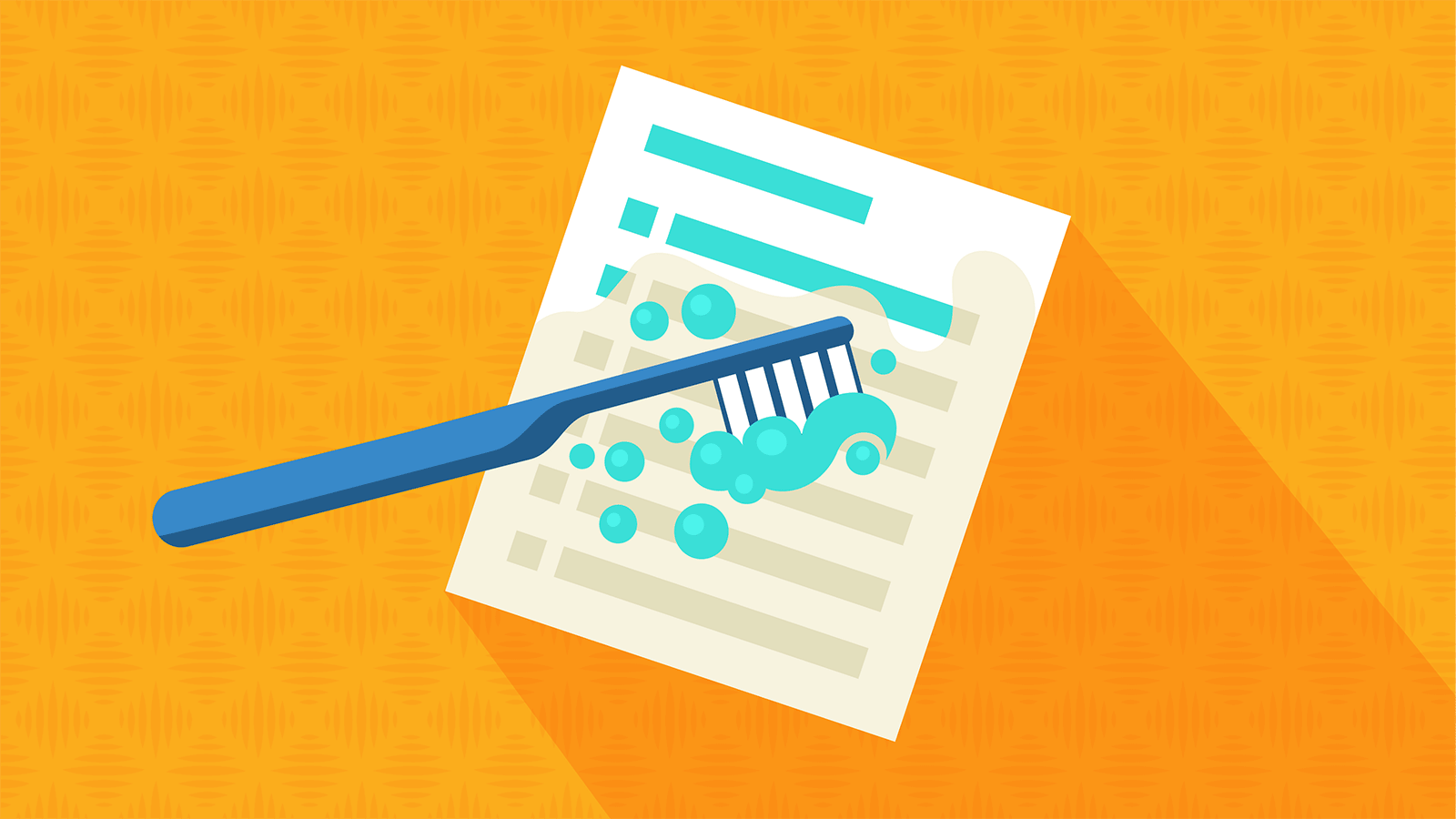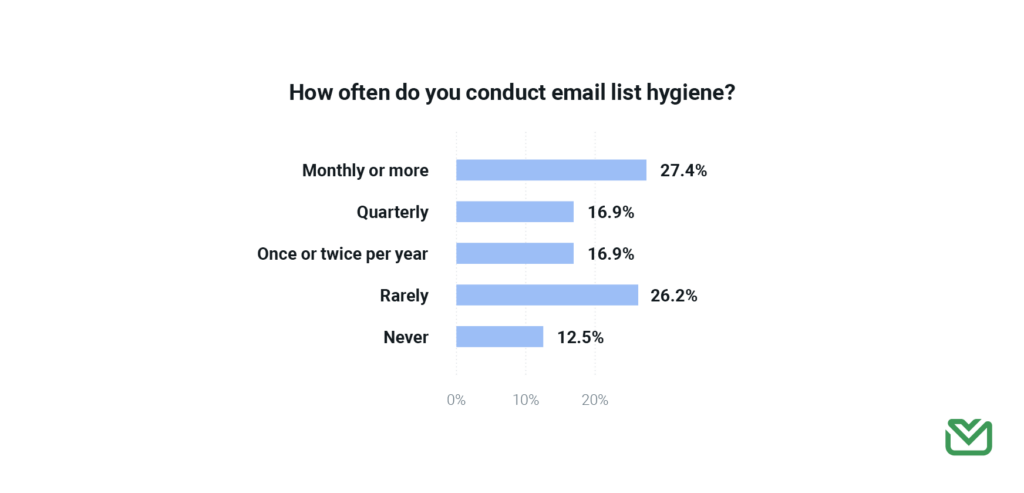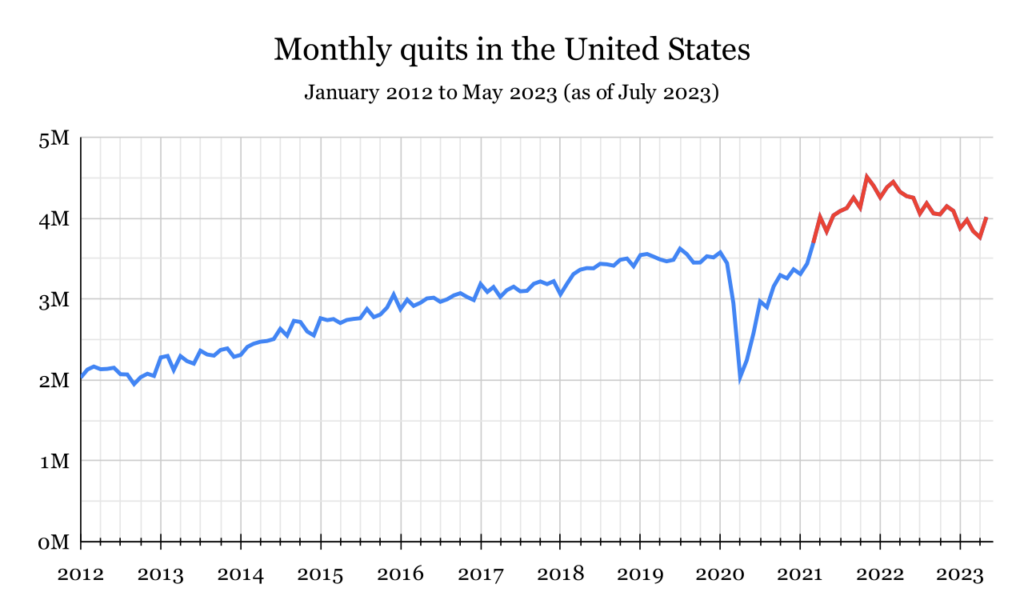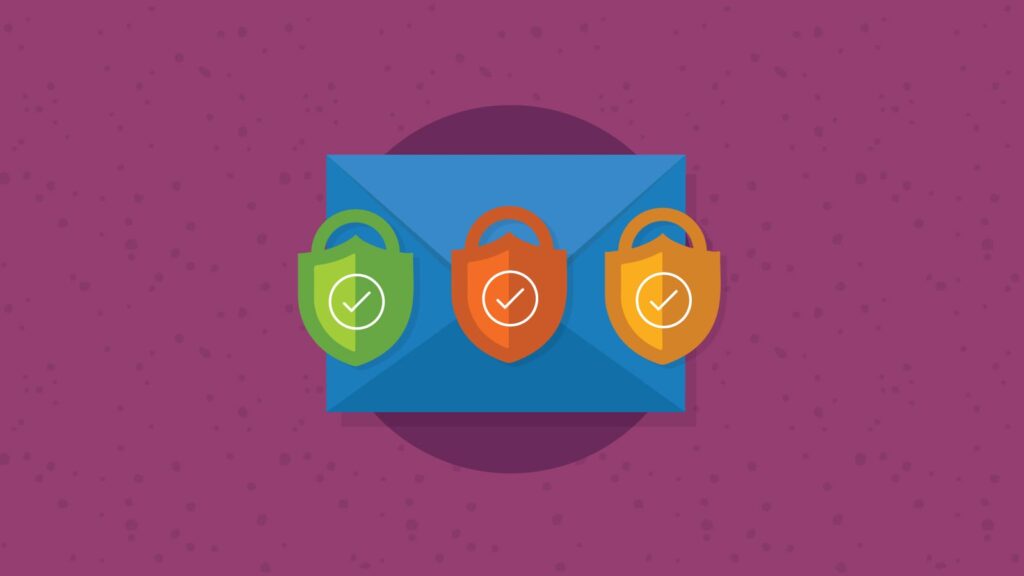Email Deliverability
Why Now is a Good Time for B2B Email List Hygiene

Email Deliverability

Lots of people use the new year to start fresh and clean up their acts. For B2B email senders, a closer look at email list hygiene may be in order.
Updating your organization’s contact data is always a good idea. But if you haven’t been paying attention to your B2B email list recently, you may want to take a closer look at the situation. Recent events could mean your list is full of bad data and invalid contacts.
If you don’t take care of things soon, it could have a negative impact on your email deliverability.
Last year, our colleagues at Sinch Mailgun surveyed senders around the world and published the results in “The state of email deliverability 2023.” When asked about their list hygiene practices, the majority of senders claimed they do it at least a couple times per year, which is the recommended minimum.
However, 38.7% of senders said they Rarely or Never conduct email list hygiene. That’s a concern.

When we look at B2B senders only, results were slightly lower with 38.2% saying they Rarely or Never practice list hygiene. But that’s nothing to celebrate. The truth is, B2B email list hygiene should probably take place more often than it does for B2C senders.
Here’s the reason why… Consumers don’t switch personal email addresses very often. However, people abandon work email addresses all the time. They get new jobs, get laid off, retire, or maybe their employer gets acquired. If you’ve been paying attention to the headlines, you’ve probably noticed there’s been a lot of moving and shaking in the world of work. Let’s take a closer look at what that means for your B2B email list.
The nature of B2B email marketing requires senders pay close attention to the health of their contact data. Because cold emails from sales are a common tactic, sometimes contact lists end up including people who never opted in. But that’s another story…
Here are three reasons why your list of legit B2B contacts may have an unhealthy amount of outdated and invalid email addresses that you need to clean up ASAP.
Also known as “The Big Quit,” the so-called Great Resignation was a workforce trend that took place toward the end of the COVID-19 pandemic. In 2021, employees started quitting their jobs en masse as the hot labor market offered opportunities to find greener pastures in roles at new companies.
The dip in the chart below indicates the start of the pandemic in 2020. That’s when people were hunkering down and staying safe in the jobs they had. Then, as things opened back up in 2021, resignation levels returned to normal and kept climbing. Those levels remained higher than pre-pandemic numbers into the first half of 2023.

As people left behind their old jobs, they also left behind old email addresses. So, if you’re among the nearly 40% who Rarely or Never clean their B2B email lists, there’s a good chance you’ve got a lot of invalid addresses that are doing nothing for you but dragging down your email engagement metrics.
While plenty of people quit after COVID, many tech workers were dealing with the opposite situation. They got laid off. Many technology companies did a lot of hiring and growing during the pandemic as demand for their products and services surged.
During the lockdowns, there was higher consumer demand for things like online shopping and streaming services (Netflix, Amazon, Spotify). There was also higher B2B demand for tools that helped businesses with things like customer communication and digital transformation (Microsoft, Salesforce, Twilio, Zoom).
What goes up must come down. Over-investing and over-hiring during COVID led to many tech workers looking for new jobs. According to TechCrunch, the tech industry lost more than 240,000 jobs in 2023 alone. That’s around 50% more than 2022, and the layoffs are still coming in 2024.
The good news for tech workers is that the job market is still strong. The bad news for B2B senders who market to people in tech is that your lists may be in desperate need of validation.

In May of 2023, Google announced it planned to update its policy on inactive accounts. When people stop using their accounts, they’re more likely to be compromised and used by bad actors for bad things like phishing scams and spamming.
In December, Google started deleting accounts that have been inactive for two years or more in a phased approach that will continue in 2024. Of course, that means inactive Gmail addresses are disappearing too.
Now, you’re probably wondering what personal Gmail accounts have to to with B2B email list hygiene. While it’s true that the purge does not impact Google Workspace accounts, it may also be true that your B2B list includes personal Gmail addresses.
If your signup forms exclude personal emails, this may not be a significant concern. However, if you allow personal Gmail addresses from B2B contacts, there’s a good chance people have been using them to subscribe. For example, what if people sign up for your newsletter or fill out a form for gated content using a personal email address they don’t check regularly? This is a common behavior when someone wants to avoid an onslaught of marketing emails from a business they’re not really interested in.

Inactive account deletion isn’t the only change from Gmail impacting deliverability. Both Gmail and Yahoo are enforcing new sender guidelines you need to know about.
Maybe you’re wondering, “What’s the big deal?” Does having outdated or invalid email addresses on a B2B list really matter? How could it hurt? I mean, you’re not bothering anyone.
Here’s the reality… Failing to regularly conduct B2B email list hygiene will eventually decrease your chances of reaching the inbox and increase the likelihood you land in spam.
Mailbox providers like Gmail, Yahoo, and Outlook are judging you as a sender. It’s called your sender reputation, and email engagement plays an important role in how your sender reputation is scored. When your engagement rates are low, it’s a sign to mailbox providers that your messages are unwanted, and maybe they should end up in the junk folder.
One thing is for certain, if there’s no one behind an email address to open and click, they’re not engaging with your B2B emails. What’s more – mailbox providers may also use abandoned email accounts as spam traps. If you’re trying to deliver emails to these addresses, your sender reputation will definitely take a hit.
There are a couple of key metrics that could indicate you’ve got a B2B list hygiene problem:
Sinch Mailgun’s report on deliverability also found a significant percentage of senders were using questionable list building practices. If your organizations has ever purchased a list of contacts or used software to scrape the web for emails, a good list cleaning is a very good idea.
Are you a B2B sender who’s worried that your list contains outdated contact data and invalid addresses that are doing damage to your sender reputation? What you need is a tool for email validation that verifies whether addresses on your list are being used or not.
Allow us to introduce you to Mailgun Validate. While you can find an entire suite of deliverability tools through Mailgun Optimize, you can also take advantage of one of that product’s most powerful features – a standalone solution for email validation. And you can use Mailgun Validate no matter who your email service provider (ESP) might be.
Not only can you use this tool for email list validation, it can also help you keep invalid addresses from getting on your list in the first place. Integrate Mailgun Validate’s Email Validation API with your sign up forms to prevent typos and keep disposable emails and spam traps off your list.
Find out if your B2B email list is in need of better hygiene today. You can preview your list health for free with Mailgun Validate.